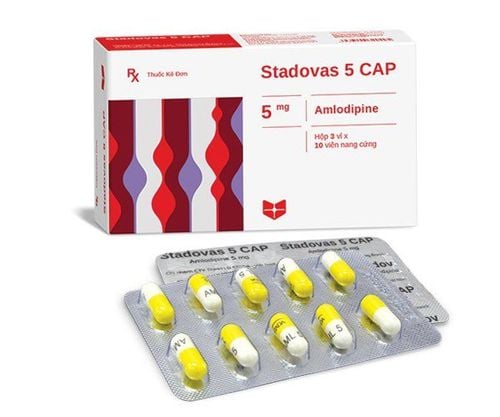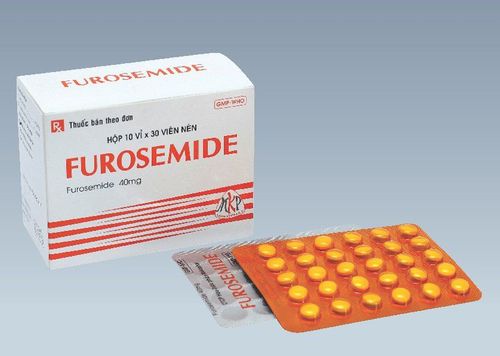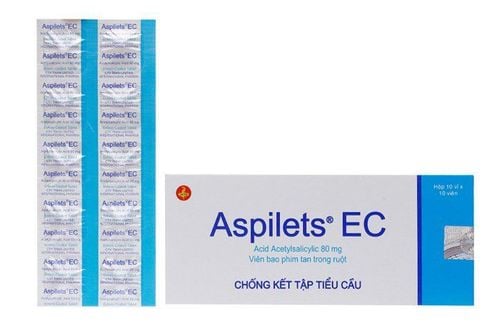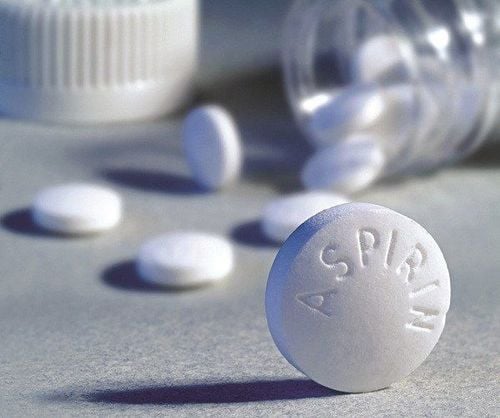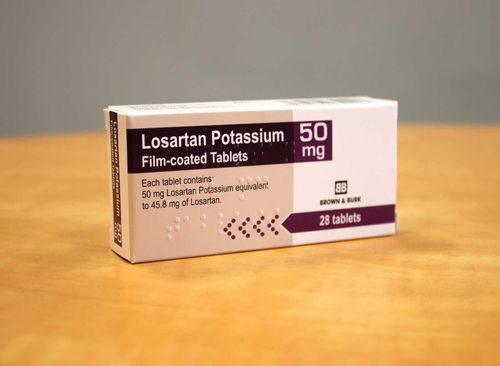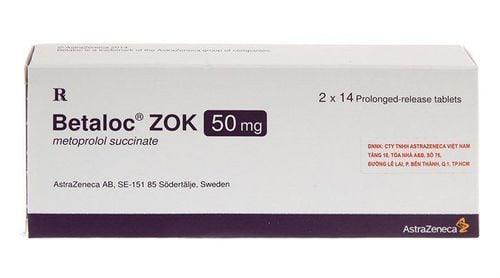This is an automatically translated article.
The article was professionally consulted with Specialist Doctor II Nguyen Quoc Viet - Interventional Cardiologist - Department of Medical Examination & Internal Medicine - Vinmec Danang International General Hospital.Angina is usually triggered by physical exertion and psychological stress and is relieved by rest or by sublingual nitroglycerin. Symptomatic treatment of angina may include antiplatelet agents, nitrates, beta-blockers, calcium channel blockers, ACE inhibitors, statins, and angioplasty or coronary bypass surgery.
1. What is angina or angina?
Angina or angina is a clinical syndrome of discomfort or pain due to myocardial ischemia. Different people experience angina in different ways, some with mild or severe symptoms. Some people with angina feel chest tightness but no pain at all. Although angina is fairly common, it can be difficult to distinguish from other types of chest pain, such as dyspepsia. The duration of angina can also last from a few seconds to several minutes. It usually happens when your heart is working harder than usual, such as during physical exertion, mental stress, or after a heavy meal. During this time, your heart needs more oxygen-rich blood than the narrowed arteries can supply.Patient's description of angina as a severe, heaviness or pressure pain that radiates throughout the chest, sometimes down the arm, into the neck, jaw or teeth, and out the back. It can be associated with shortness of breath, nausea, vomiting, sweating, and weakness. Many people describe the sensation of angina as full, tight, burning, squeezing, or painful. You may feel discomfort in your upper abdomen, between your shoulders, or in your back, the pain is never above your ears or below your navel. The pain may be in only one arm or both and may or may not be associated with other symptoms.
Angina tends to progress slowly over time and patients may not realize that their symptoms are caused by heart disease. It can be a manifestation of fatigue and exercise intolerance, a gradual inability to do work or other activities that were previously easier to do.
Unfortunately for some patients, they may have no symptoms, even if the coronary arteries are significantly narrowed. Therefore, angina is a warning sign that the heart muscle is not supplied with enough blood and oxygen. If left unnoticed, it can lead to a heart attack or myocardial infarction.
2. Symptoms of angina pectoris
2.1. Causes of AnginaSuch an imbalance between supply and demand can occur when the arteries are narrowed. The stenosis is usually caused by atherosclerosis of the coronary arteries but can be caused by coronary artery spasm or, rarely, by coronary artery embolism. Acute coronary thrombosis can cause angina if the obstruction is partial or transient, but it often causes acute myocardial infarction (MI).
Caused by myocardial oxygen demand, which is determined primarily by heart rate, systolic wall tension, and contractility, coronary artery stenosis often leads to angina that occurs on exertion and is relieved at rest rest.
In addition to exercise, cardiac workload can be increased by disorders such as hypertension, aortic stenosis, aortic regurgitation or hypertrophic cardiomyopathy. These disorders can also reduce relative myocardial perfusion because of increased myocardial volume (causing decreased diastolic flow).
Reduced oxygen supply, as in the case of anemia or severe hypoxia, can precipitate or worsen angina.
2.2. Symptoms of Angina One of the symptoms of angina is pain and discomfort in the chest. The type of pain varies and can be described as pressure, squeezing, burning, or tightness. Other signs and symptoms may include:
Nausea Fatigue Loss of breath Sweating Dizziness. Women, especially young women, are more likely to feel neck, jaw, abdominal, back pain, or discomfort. Shortness of breath is more common in older adults and people with diabetes. Classic angina symptoms are more common in younger and middle-aged men.
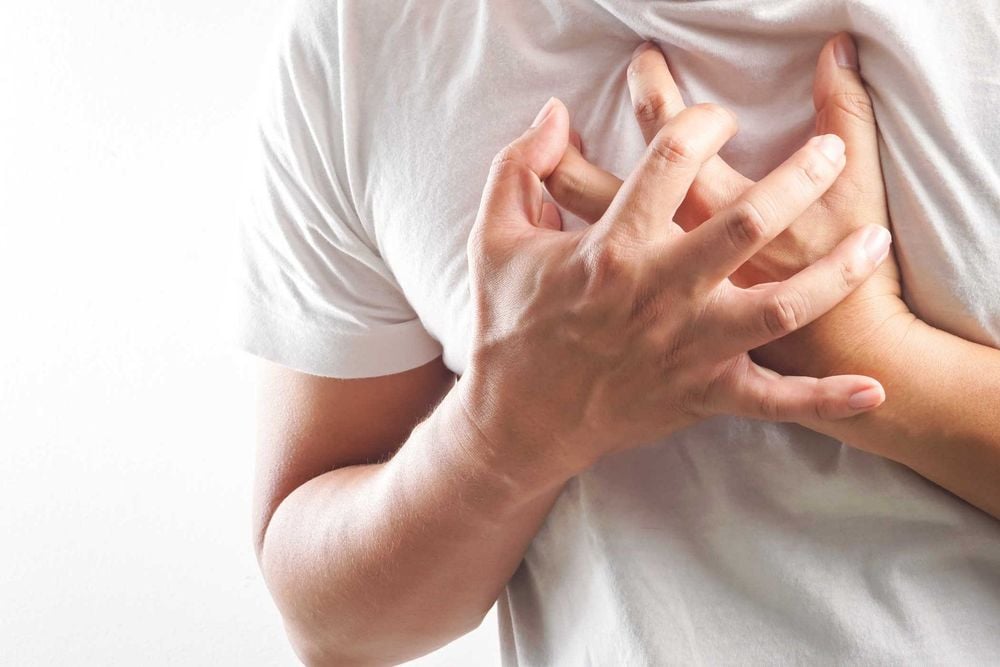
2.2.1. Stable angina Possible symptoms of stable angina include:
Stable angina occurs when the heart has to work harder or harder; Pains tend to be the same; Usually lasts for a short time (5 minutes or less); Relieved by rest or medication; Feeling of bloating or indigestion; It may feel like chest pain spreading to your arms, back, or other areas. 2.2.2. Unstable angina Often occurs when you may be resting, sleeping, or exerting little; Appears unexpectedly; May last longer than stable angina; Rest or medication usually doesn't help; Unstable angina that gets worse over time; Can lead to heart attack. 2.2.3. Microvascular angina May be more severe and last longer than other types of angina; Shortness of breath, trouble sleeping, fatigue and lack of energy may occur; Usually first noticed during routine daily activities and times of mental stress.
3. Symptomatic treatment of angina
When symptoms of angina appear, the person should:Stop and rest immediately. Take medication: If rest doesn't relieve your symptoms, take a dose of an angina reliever. Sit or lie down before taking the medicine, as it can make you dizzy. You should use the smallest dose that you normally take. Spray: Once under the tongue Ingest: Place under your tongue but do not swallow it. When your symptoms stop, spit out what's left of the pill. Wait 5 minutes. If the angina continues, take another dose of the medicine. Tell someone how you're feeling or call a relative or friend. Call 911 if the symptomatic treatment of angina does not completely improve within the 10 minutes you have waited or; symptoms get worse or feel worse quickly. 3.1. Medications for the treatment of angina For the relief of symptoms during an acute attack, sublingual nitroglycerin is the most effective medication. Nitroglycerin is a potent smooth muscle relaxant and vasodilator. Its main sites of action are in the peripheral vascular tree, especially in the venous or capacitance system and in blood vessels. Even severely atherosclerotic vessels can dilate in areas without plaque. Nitroglycerin reduces systolic blood pressure and dilates the systemic veins, thereby reducing myocardial wall tension, a major determinant of myocardial oxygen demand. Nitroglycerin sublingually for acute attacks or as pre-exercise prophylaxis. Dramatic relief usually occurs within 1.5 to 3 minutes, completes in about 5 minutes, and lasts up to 30 minutes. The dose may be repeated every 4 to 5 minutes to 3 times if the condition is not completely relieved. Patients should always carry nitroglycerin tablets or aerosols to use promptly when an angina attack occurs.

Antiplatelet agents that inhibit platelet aggregation. Aspirin irreversibly binds to platelets and inhibits cyclooxygenase and platelet aggregation. Other antiplatelet agents (eg, clopidogrel, prasugrel, and ticagrelor) block adenosine diphosphate-induced platelet aggregation. These drugs can reduce the risk of ischemic events (such as sudden death), but they are most effective when taken together. Patients who cannot tolerate one drug should take another alone.
Beta-blockers limit symptoms and prevent heart attack, sudden death better than other drugs. Beta-blockers block sympathetic stimulation of the heart and decrease systolic blood pressure, heart rate, contractility, and cardiac output, thereby reducing myocardial oxygen demand and increasing exercise tolerance. . Beta-blockers also increase the threshold for ventricular fibrillation. Most patients tolerate these drugs well. Many beta-blockers are available and effective. The dose is titrated up as needed until limited by bradycardia or adverse events. Patients who cannot tolerate beta-blockers receive negative chronotropic calcium channel blockers (eg, diltiazem, verapamil). Persons at risk for beta-blocker intolerance (eg, those with asthma) may be tried with a cardioselective beta-blocker (eg, bisoprolol) possibly with pulmonary function testing before and after when using drugs to detect drug-induced bronchospasm.
Long-acting nitrates (oral or transdermal) are used if symptoms persist after maximal dose of beta-blocker. If angina occurs at predictable times, a nitrate will be given to compensate for those times. Oral nitrates include isosorbide dinitrate and mononitrate (the active metabolite of dinitrate). They are effective within 1 to 2 hours; Their effects last from 4 to 6 hours. Sustained release formulations of isosorbide mononitrate appear to be effective throughout the day. For transdermal use, nitroglycerin skin patches have largely replaced nitroglycerin ointment mainly because of its inconvenience. The patches release the medicine slowly for a lasting effect. Nitrate tolerance may occur, particularly when plasma concentrations are kept constant. Since the risk of myocardial infarction is highest in the early morning, a period of rest in the afternoon or early evening with nitrates is reasonable unless the patient usually has angina at that time. For nitroglycerin, a rest period of 8 to 10 hours is sufficient. Isosorbide may require a 12-hour break. If administered once daily, sustained-release isosorbide mononitrate is unlikely to cause tolerance.
Calcium channel blockers may be used if symptoms persist despite nitrate use or if nitrates are not tolerated. Calcium channel blockers are especially helpful if hypertension or coronary artery spasm is also present. Different types of calcium channel blockers have different effects. Dihydropyridines (eg, nifedipine, amlodipine, felodipine) have no chronotropic effects and differ significantly in their negative conotropic effects. Shorter-acting dihydropyridines may cause reflex tachycardia and are associated with increased mortality in patients with CAD; They should not be used alone to treat stable angina. Long-acting dihydropyridine formulations have less effect on tachycardia; they are most commonly used with beta blockers. Among the longer-acting dihydropyridines, amlodipine has the weakest negative inotropic effect; it can be used for patients with left ventricular systolic dysfunction. Diltiazem and verapamil, other calcium channel blockers, have negative chronotropic and inotropic effects. They can be used alone in patients with beta-blocker intolerance or asthma and normal left ventricular systolic function but may increase cardiovascular mortality in patients with dysfunction. left ventricular systolic function.
Ranolazine is a sodium channel blocker that can be used to treat chronic angina. Because ranolazine can also prolong the QTc, it is usually reserved for patients whose symptoms persist despite optimal treatment with other anti-vaginal drugs. Ranolazine may not be as effective in women as it is in men. Dizziness, headache, constipation, and nausea are the most common side effects.
Ivabradine is a sinus node inhibitor that inhibits the influx of sodium/potassium into a certain channel in the sinus node cells, thereby slowing the heart rate without reducing contractility. It can be used for the symptomatic treatment of chronic stable angina attacks in patients with normal sinus rhythm who cannot take beta-blockers or in combination with beta-blockers in uncontrolled patients. good with beta-blockers and heart rate >60 beats/min.
3.2. Symptomatic treatment of angina with revascularization of PCI (angioplasty, stenting) or CABG (coronary artery bypass grafting) should be considered if angina persists despite pharmacological and therapeutic therapy. deterioration in quality of life or if anatomical lesions (recognized during angiography) place the patient at high risk of death. The choice between PCI and coronary artery bypass grafting depends on the extent and location of the anatomic lesion, the experience of the surgeon as well as the medical center, and the patient's choice.
PCI is often preferred for 1- or 2-vessel disease with suitable anatomical lesions and is increasingly used for 3-vessel disease. Lesions that are long or near bifurcations are usually not treatable with PCI. However, as stent technology improves, PCI is being used for more complex cases. Coronary artery bypass grafting is very effective in some patients with angina. Coronary artery bypass grafting is superior to PCI in patients with diabetes and patients with transplantable multivessel disease. Ideal choice with severe angina and localized disease or diabetes. About 85% of patients are in complete remission or symptom-free. Exercise stress testing showed a positive correlation between graft tolerance and improved exercise tolerance, but exercise tolerance sometimes improved despite closed the puzzle. Coronary artery bypass grafting improves survival for patients with left primary disease, those with 3-vessel disease and poor left ventricular function, and some patients with 2-vessel disease. However, for patients with mild, moderate angina (CCS type 1 or 2) or 3-vessel disease and good ventricular function, coronary artery bypass grafting seems to only slightly improve survival. PCI is increasingly being used for unprotected left primary stenosis (i.e., no left anterior transverse or left anterior cross section), with outcomes at one year similar to coronary artery bypass grafting. . For patients with 1-vessel disease, the outcomes of drug therapy, PCI, and coronary artery bypass grafting are similar; The exceptions are left primary disease and left anterior descending disease, for which revascularization appears to be beneficial.

4. Prevent angina
To prevent angina attacks, patients should note:For those who have a habit of smoking should stop smoking: After 2 years after stopping smoking, the risk of heart attack decreases compared to those who do not. never smoke. Hypertension (blood pressure > 130/80 for patients with coronary artery disease) is treated with care because even mild hypertension increases the workload of the heart. Losing weight will reduce the severity of your angina. Reducing total cholesterol and low-density lipoprotein (LDL) cholesterol (through diet plus statins) will slow progression of coronary heart disease (CAD), regress some lesions, improve endothelial function tissue. Exercise such as regular walking will help reduce the risk of acute ischemic events and improve exercise tolerance. In summary, the symptomatic treatment of angina may include antiplatelet drugs, nitrates, beta-blockers, calcium channel blockers, etc. In cases where pharmacological treatment is used, the angina persists. The patient may need angioplasty or coronary bypass surgery.
Vinmec International General Hospital is one of the most prestigious medical treatment units for cardiovascular diseases in Vietnam. Vinmec's Cardiology Department has always received much praise and satisfaction from domestic and international customers, being the pioneers in successfully applying the world's most advanced techniques in the treatment of cardiovascular diseases.
When examining and treating cardiovascular diseases at Vinmec, customers will receive:
A team of highly qualified and experienced experts: qualified doctors from Master to Professor, Dr. Doctor, reputable in medical treatment, surgery, interventional cardiac catheterization, highly trained domestically & abroad. In particular, Prof. TS.BS Vo Thanh Nhan - Cardiology Director of Vinmec Central Park was recognized as the first and only expert in Vietnam to be awarded the "Proctor" certificate on TAVI. State-of-the-art equipment, comparable to major hospitals in the world: The most modern operating room in the world; The most modern silent magnetic resonance imaging machine in Southeast Asia; The CT machine has a super-fast scanning speed of only 0.275s/round without the use of drugs to lower the heart rate; The 16-sequence PET/CT and SPECT/CT systems help detect damage to the cardiovascular organs early even when there are no symptoms of the disease. Applying the most advanced advanced cardiovascular techniques in the world in treatment: Painless open heart surgery; Percutaneous aortic intervention without general anesthesia; Treatment of mitral regurgitation through the catheter has a success rate of 95%; Ventricular-assisted artificial heart transplantation for patients with end-stage heart failure prolongs quality of life beyond 7 years. Cooperating with leading cardiovascular centers in Vietnam and the world such as: National Heart Institute, Cardiology Department of Hanoi Medical University, University of Paris Descartes - Georges Pompidou Hospital (France), University of Pennsylvania (France), University of Pennsylvania (France), University of Pennsylvania (France). United States)... with the aim of updating the most modern cardiovascular treatments in the world.
Please dial HOTLINE for more information or register for an appointment HERE. Download MyVinmec app to make appointments faster and to manage your bookings easily.





